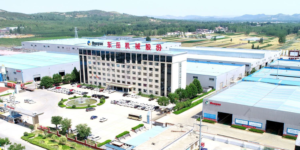Material & Characteristics
The choice of the right building material is one of the key factors for sustainable buildings. Autoclaved aerated concrete is a building material which offers considerable advantages over other construction materials. Autoclaved aerated concrete’s high resource efficiency gives it low environmental impact in all phases of its life cycle, from the processing of raw materials to the disposal of AAC waste.
Environmental Performance
Resources
AAC is made from naturally occurring materials that are found in abundance – lime, fine sand, other siliceous materials, water and a small amount of aluminium powder (manufactured from a by-product of aluminium). Some process also use industrial by-products. Furthermore the production of AAC demands relatively small amounts of raw materials per m3 of product, and up to a fifth as much as other construction products. Its high resource efficiency results into a low environmental impact in all phases of its life cycle.
Environmental impact during production
No raw materials are wasted in the production process and all production offcuts are fed back into the production circuit. Even with some processes where a small amount of surplus material is left over after curing, this is ground and recovered for other uses.
The manufacture of AAC requires less energy than for all other masonry products, thereby reducing use of fossil fuels and associated emissions of carbon dioxide (CO2). Industrial-quality water is used and neither water nor steam are released into the environment. No toxic gases are created in the production process.
Environmental impact during use
AAC’s excellent thermal efficiency makes a major contribution to environmental protection by sharply reducing the need for space heating and cooling in buildings. In addition, AAC’s easy workability allows accurate cutting that minimises the generation of solid waste during use. Unlike other building materials AAC does not need to be used in combination with insulation products, which increase the environmental impact and cost of construction.
Reuse, recovery and disposal
Throughout the life cycle of AAC, potential waste is reused or recycled wherever possible to minimise final disposal in landfill. Where AAC waste is sent to landfill, its environmental impact is minor since it contains no toxic substances.
Technical Performance
Fire Resistance
Autoclaved aerated concrete provides the highest security against fire and meets the most stringent fire safety requirements. Due to its purely mineral composition, AAC is classified as a non-combustible building material. It is both resistant to fire up to 1200°C and, unlike other construction materials, heatresistant.
Structural Performance
Autoclaved aerated concrete is extremely strong and durable despite its lightweight. AAC’s solidity comes from the calcium silicate that encloses its millions of air pores and from the process of curing in a pressurised steam chamber, an autoclave. Its excellent mechanical properties make it the construction material of choice for earthquake zones.
Sound Insulation
AAC has excellent sound insulation properties compared to other building materials with the same weight.
Do you want to become a member of EAACA? Contact us!
News

We welcome a new Member – Dongyue Machinery Group
We are pleased to announce that Dongyue Machinery Co, Ltd. has recently joined the association and supports us in our work. Dongyue Machinery Co., Ltd.

Election Piotr Dauksza
At a recent meeting of the Executive Committee of the European Autoclaved Aerated Concrete Association (EAACA), the Committee unanimously elected Mr Piotr Dauksza as the

EAACA statement on the current RAAC topic in the UK
Following various media reports on the subject of RAAC in the UK, we as a European association would like to comment on this. Please find
